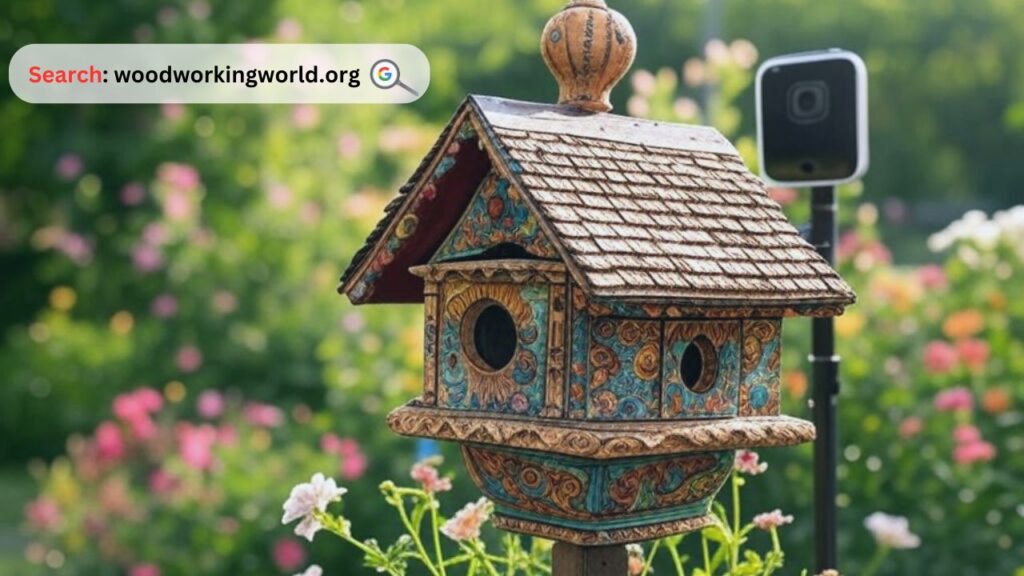Discover the perfect shelter for your feathered friends with these creative Martin House birdhouse ideas! Explore unique designs, DIY tips, and expert advice to create a safe and stylish home for birds.
Purple Martins are social birds that rely heavily on human-made birdhouses, known as Martin houses, for nesting. If you are an avid birdwatcher or simply enjoy creating a haven for these beautiful aerial insectivores, building or selecting the right Martin house is essential. This article will guide you through various Martin house birdhouse ideas, offering step-by-step instructions, comparisons, and expert tips to make your project a success.

Why Choose a Martin House?
Purple Martins are migratory birds that require specific shelter conditions. Unlike many other bird species, they prefer communal living spaces and readily adapt to artificial nesting structures. Here’s why installing a Martin house is beneficial:
- Helps Conservation Efforts – Martins depend on human-built structures, especially in North America.
- Natural Pest Control – They consume large numbers of insects, including mosquitoes.
- Educational & Enjoyable – Observing their nesting habits is fascinating.
- Enhances Garden Aesthetics – Beautifully designed Martin houses can serve as garden decor.
👉 Build 16,000+ Projects with Step-by-Step Plans—No Big Workshop or Costly Tools Needed! Start Now!
Step-by-Step Guide to Building a Martin House
Step 1: Choose the Right Design
Before starting, decide whether to purchase a ready-made Martin house or construct one from scratch. Common designs include:
- Traditional Multi-Level Houses – Features multiple compartments to accommodate several bird families.
- Gourd Houses – Natural or artificial gourds that provide individual nesting spaces.
- Plastic or Metal Houses – Durable and weather-resistant options.
Step 2: Gather Materials
You’ll need the following materials:
- Wood (cedar or pine) – Preferred for durability and insulation.
- Galvanized Screws – For sturdy construction.
- Paint (white or light colors) – Reflects heat and keeps the interior cool.
- Drill & Saw – Essential for cutting and assembling the structure.
- Perches & Entrance Holes – Provide easy access for the birds.
Step 3: Construct the House
- Cut the Wood Panels – Ensure each compartment is at least 6” x 6” x 6”.
- Assemble Compartments – Securely screw the panels together.
- Drill Entrance Holes – 2-inch diameter to allow easy entry while keeping out predators.
- Paint & Finish – Use non-toxic, waterproof paint to protect the wood.
- Install Ventilation & Drainage – Prevents overheating and water accumulation.
Step 4: Mounting the House
- Install the house 10-20 feet high for safety.
- Use metal poles to prevent predator access.
- Ensure an open space of at least 40 feet around the house for easy flight access.
Step 5: Maintenance & Monitoring
- Clean the compartments at the end of each season.
- Watch for predator activity and install baffles if needed.
- Remove invasive species like sparrows and starlings.
Expert tips on Woodworking 🌿📦 Watch now!

Comparison Table: Types of Martin Houses
| Feature | Wooden House | Gourd House | Plastic/Metal House |
|---|---|---|---|
| Durability | Medium | High | High |
| Cost | Moderate | Affordable | Expensive |
| Maintenance | Medium | Low | High |
| Bird Preference | High | Very High | Medium |
| Weather Resistance | Low | High | Very High |
Expert Tips for a Successful Martin House
- Position Away from Trees – Martins need an open flyway for landing and takeoff.
- Use Predator Guards – Protect against snakes, raccoons, and other predators.
- Offer Supplemental Food – If natural food sources are scarce, provide crushed eggshells and mealworms.
- Avoid Heavy Pesticide Use – Martins rely on insects for food; chemicals can reduce their food supply.
Quote to Inspire
“A bird does not sing because it has an answer, it sings because it has a song.” – Maya Angelou
Frequently Asked Questions (FAQ)
1. How many compartments should a Martin house have?
A Martin house should have at least 6-12 compartments to accommodate multiple bird families.
2. What is the best color for a Martin house?
White or light-colored houses help reflect sunlight, keeping the interior cooler for the birds.
3. How high should I place my Martin house?
The ideal height is between 10-20 feet to ensure safety from predators and easy flight access.
4. Do Purple Martins return to the same house every year?
Yes, if conditions are favorable, Martins exhibit site fidelity and return annually.
5. How can I attract Purple Martins to my house?
Install the house in an open area, provide fresh water sources nearby, and eliminate competing species like sparrows.
6. Can I use a single-house design instead of a multi-compartment model?
While possible, Martins prefer communal living, so a multi-compartment house or multiple gourd houses are more effective.
7. What time of year should I put up a Martin house?
Early spring, before their migration back to breeding grounds, is the best time to set up the house.

Conclusion
Creating a Martin house is a rewarding experience that helps sustain Purple Martin populations while enhancing your outdoor space. Whether you choose a classic wooden house, a gourd cluster, or a modern metal structure, providing the right shelter ensures these delightful birds return year after year. Follow the steps outlined above, consider expert tips, and watch as your backyard transforms into a lively haven for Purple Martins!
With proper planning, placement, and maintenance, your Martin house will become a thriving bird sanctuary for years to come!
👉 Click To Order Teds Woodworking With A 60-Money-back Guarantee From – Official Website